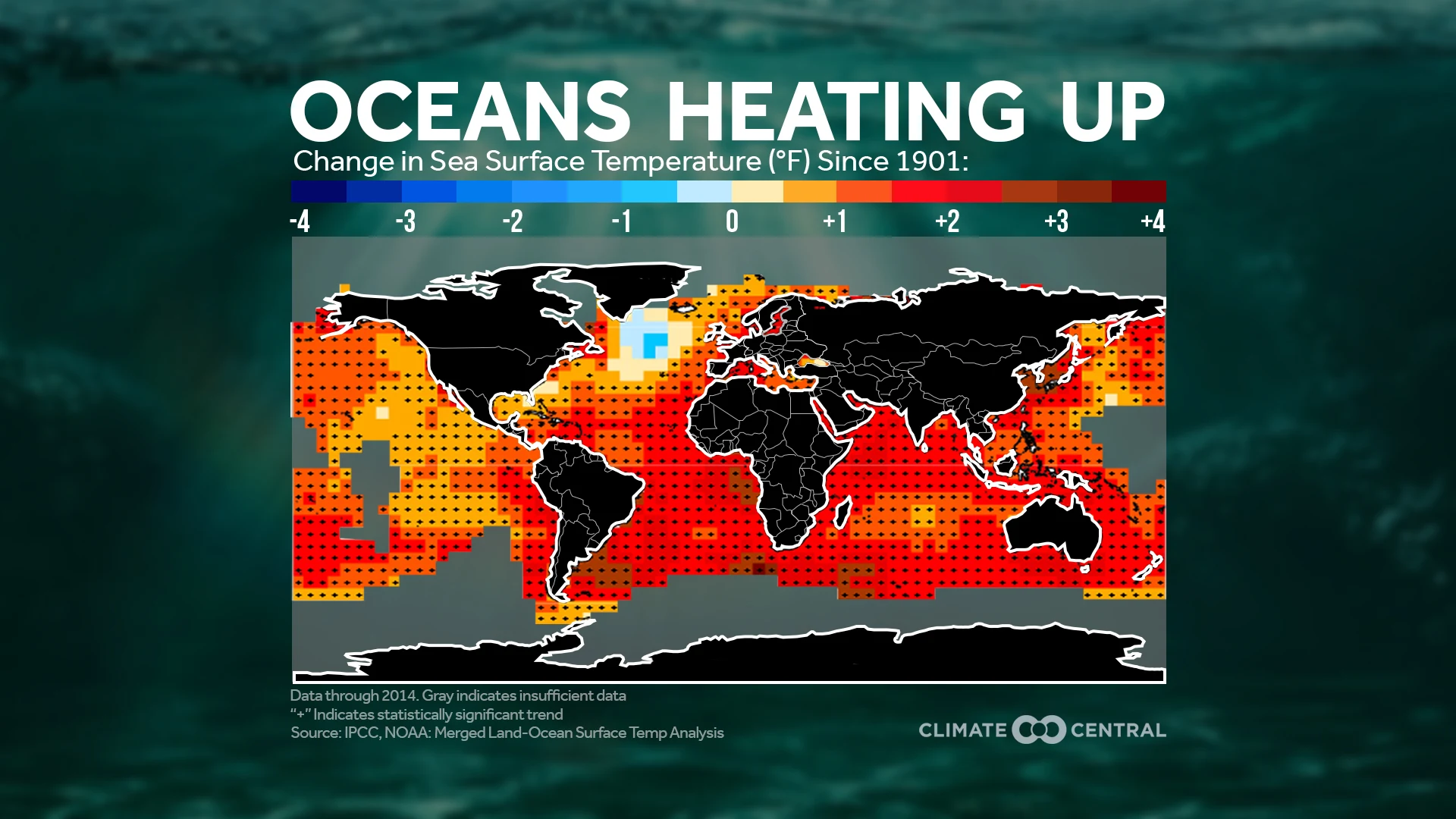
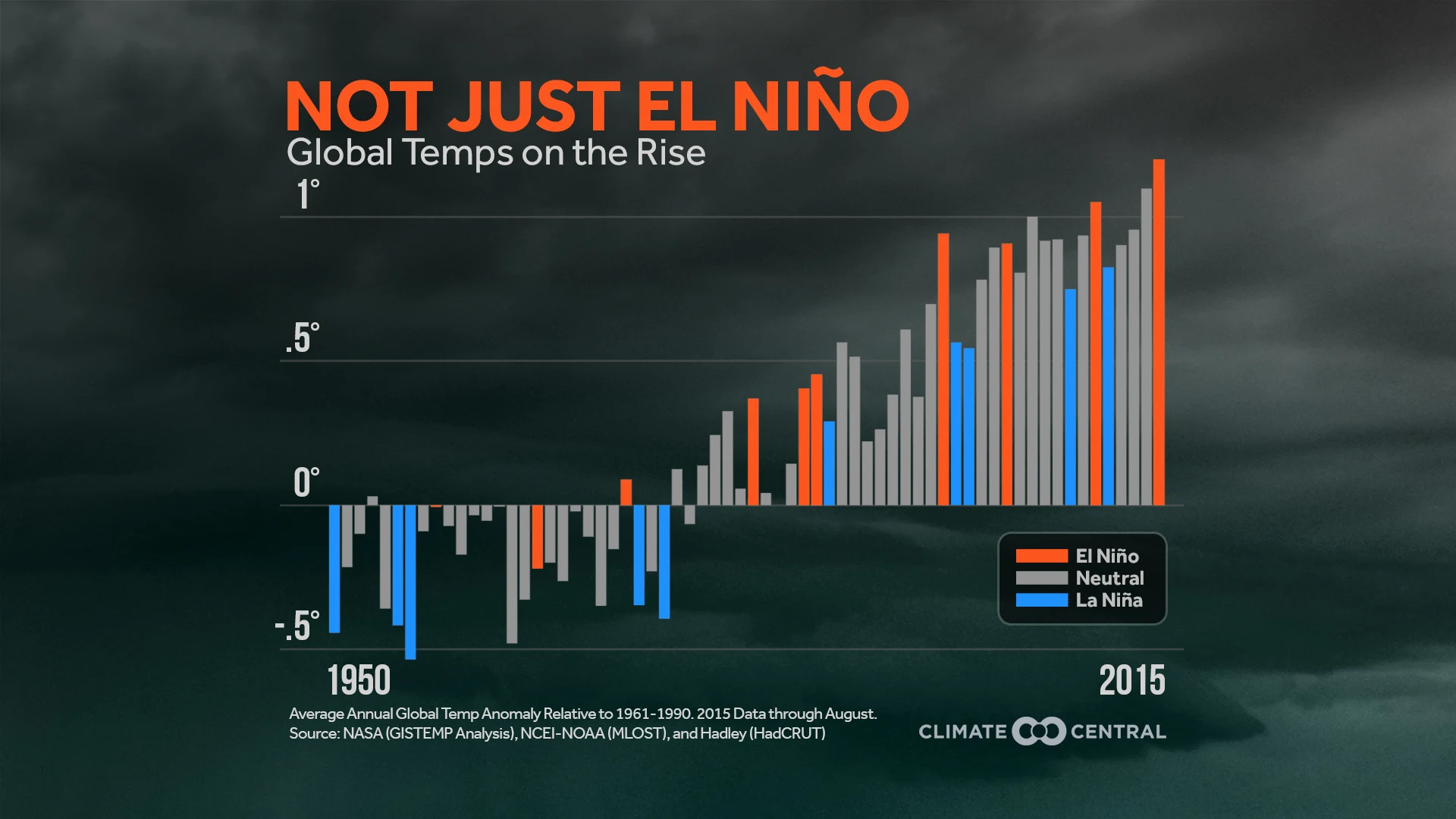
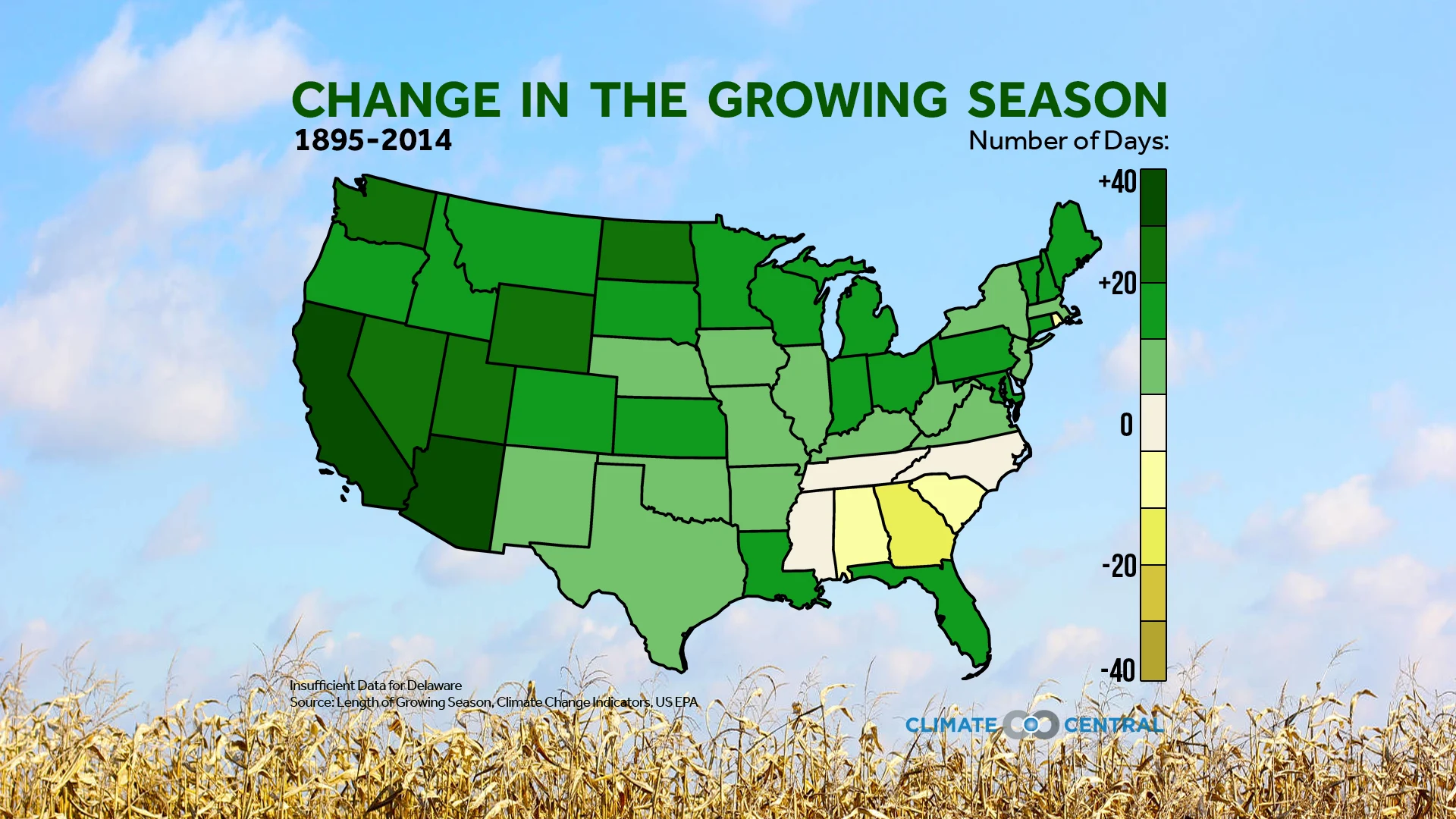
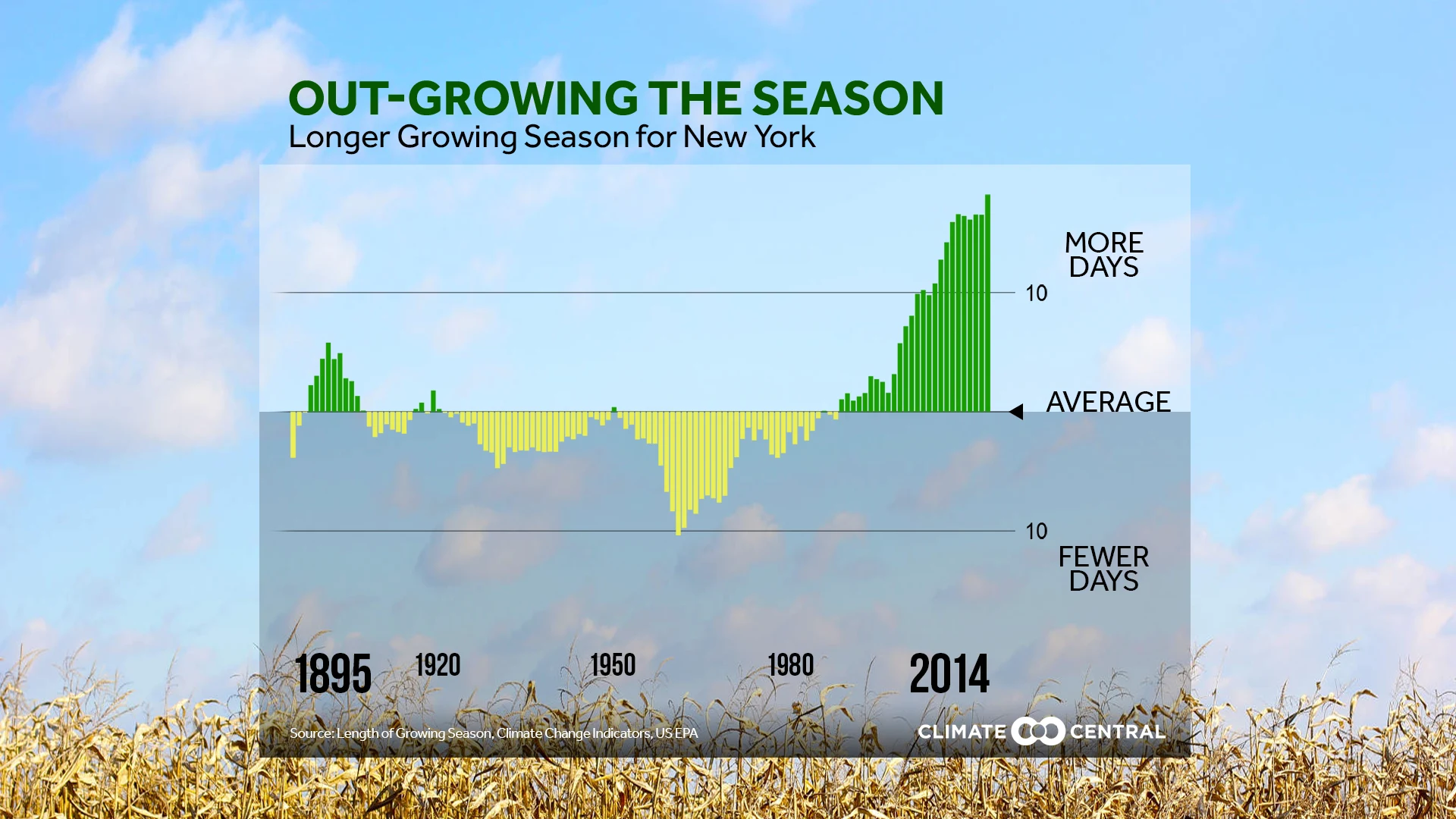
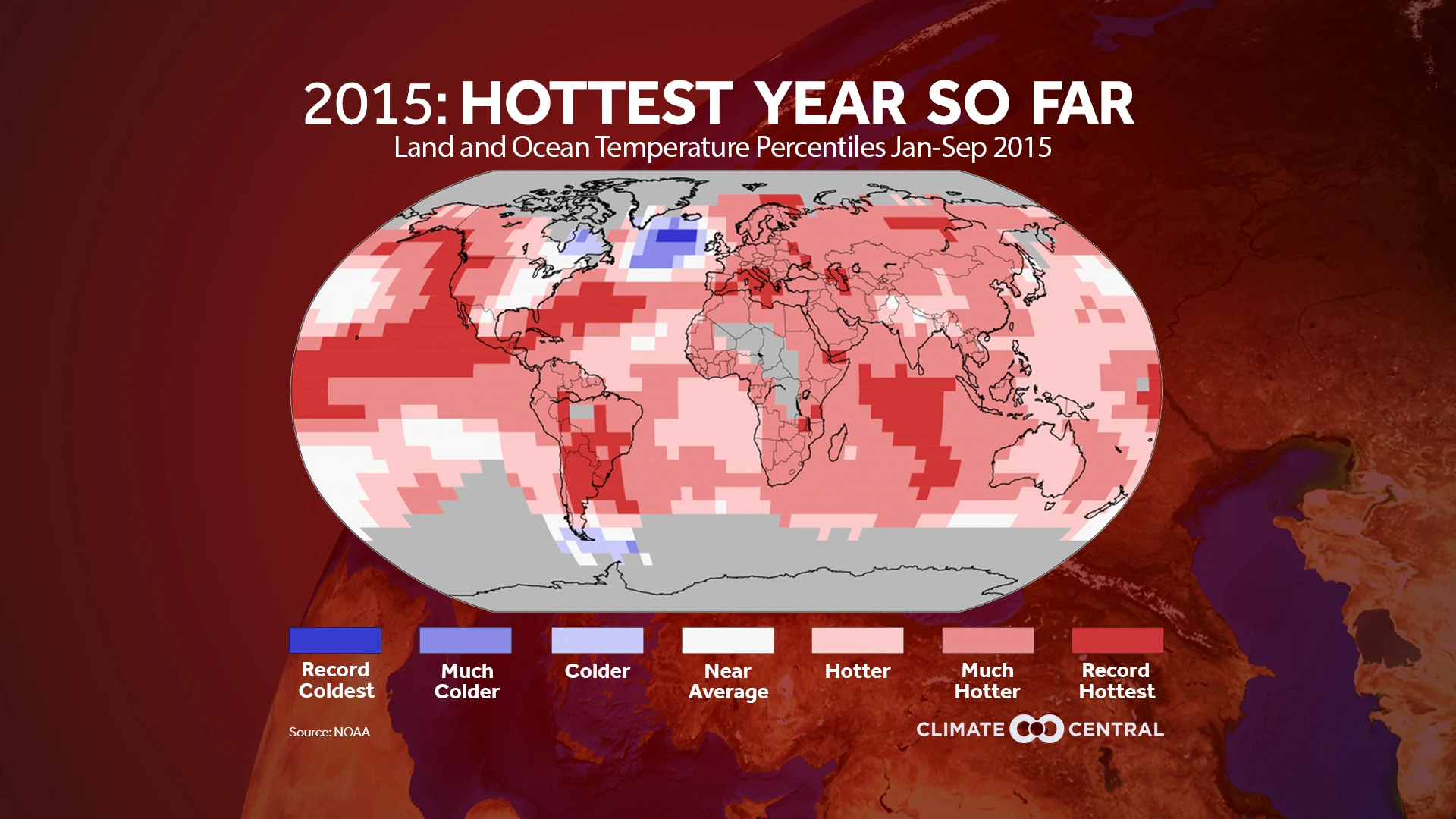
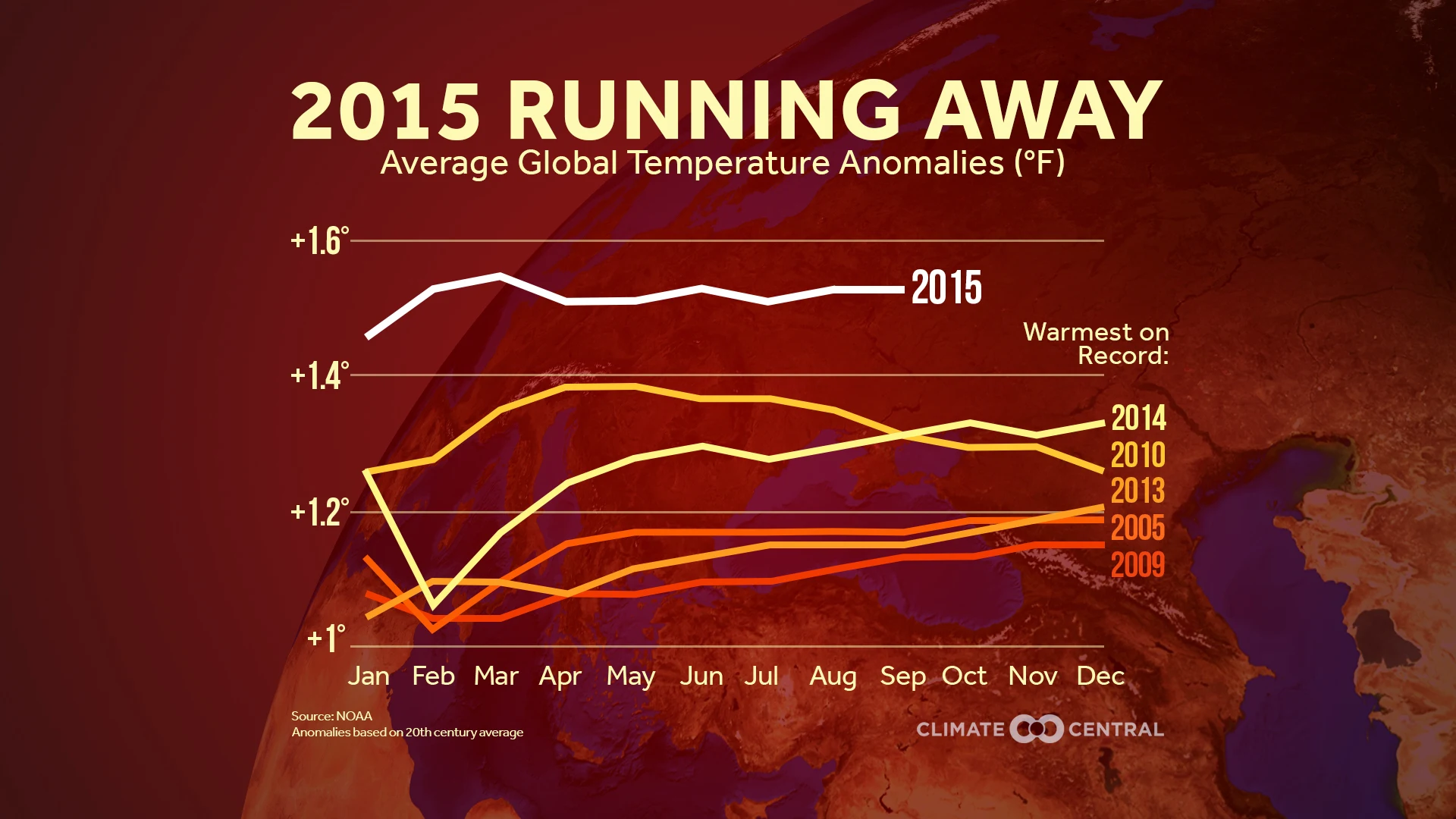
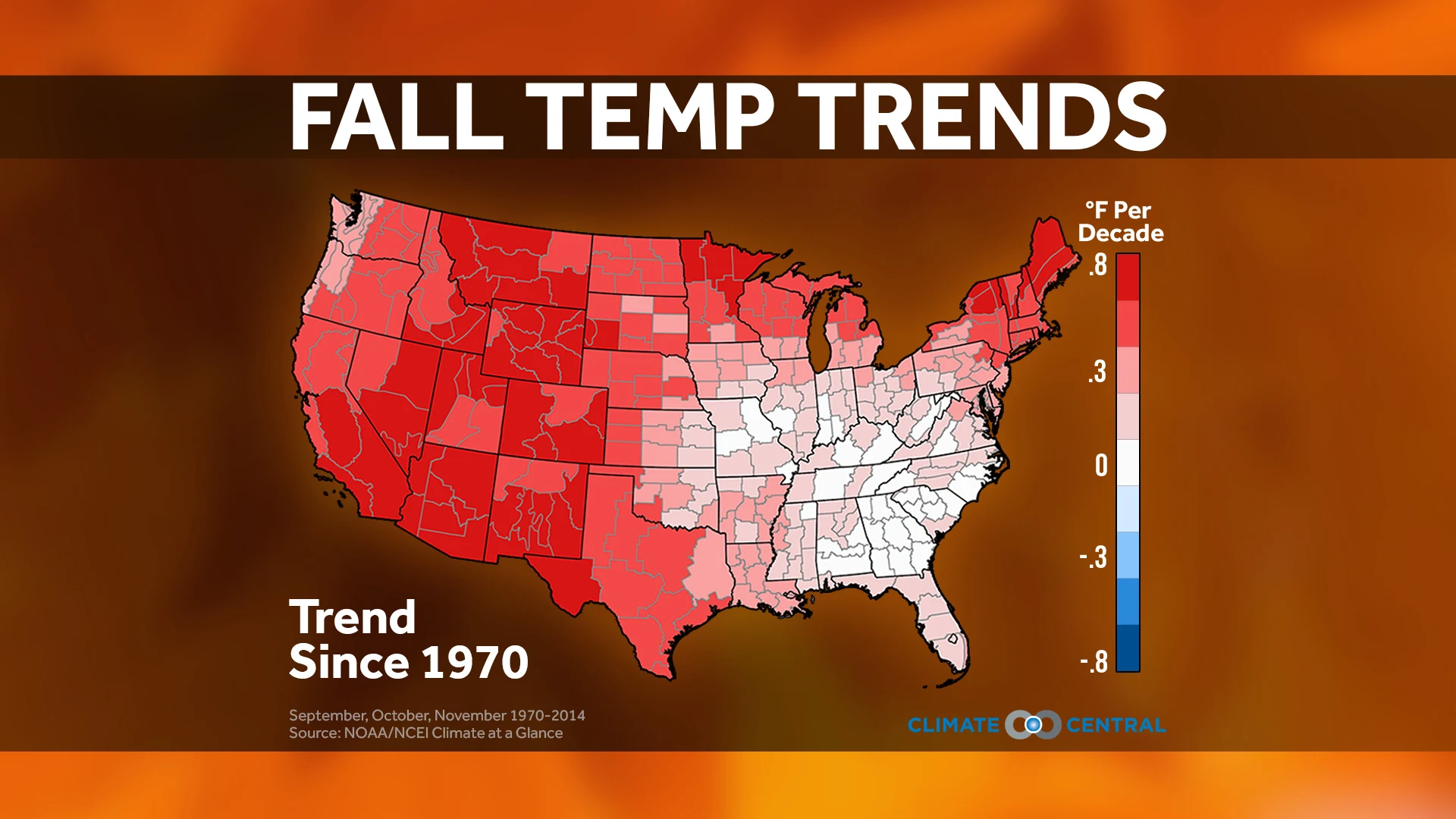
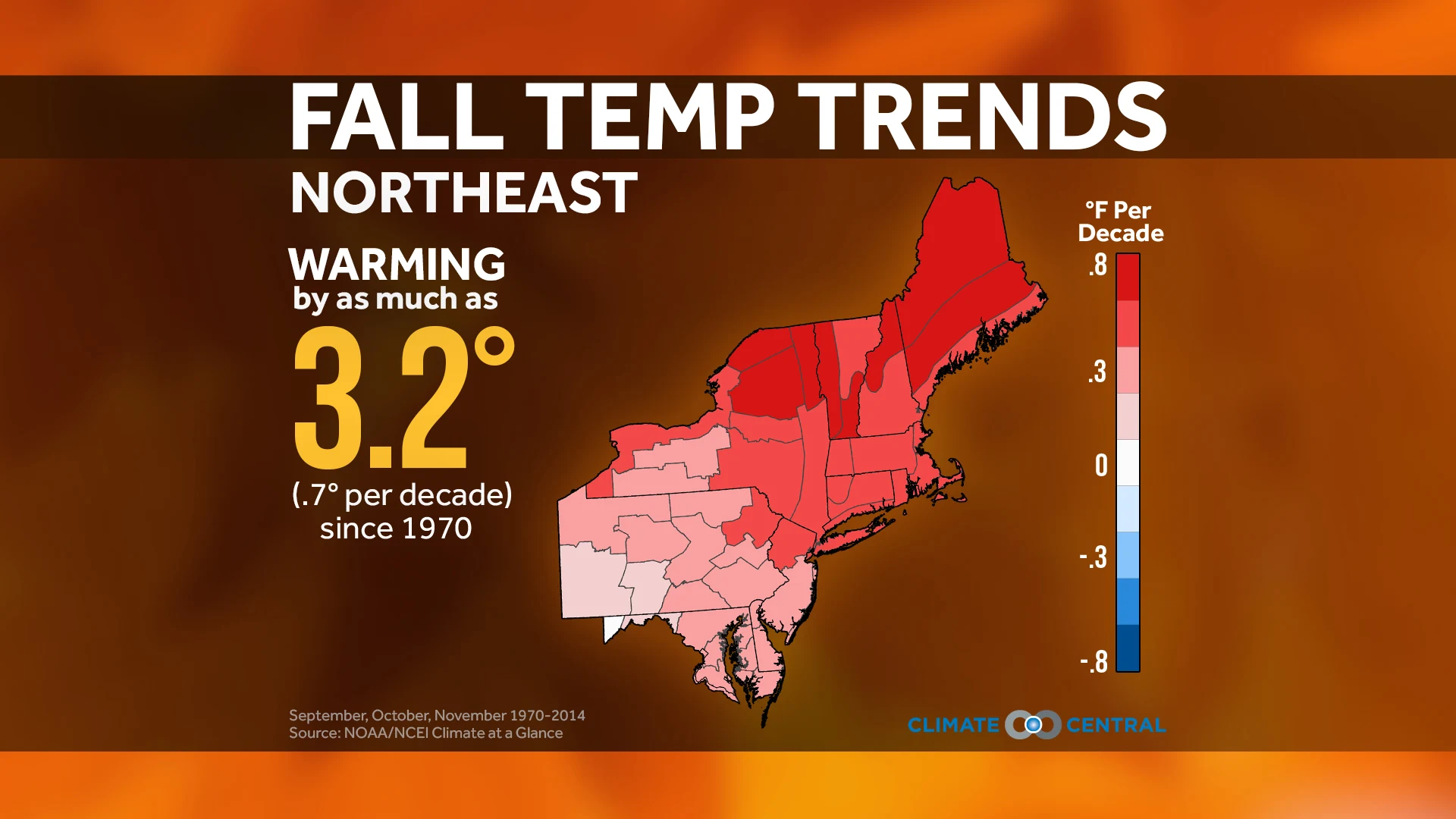
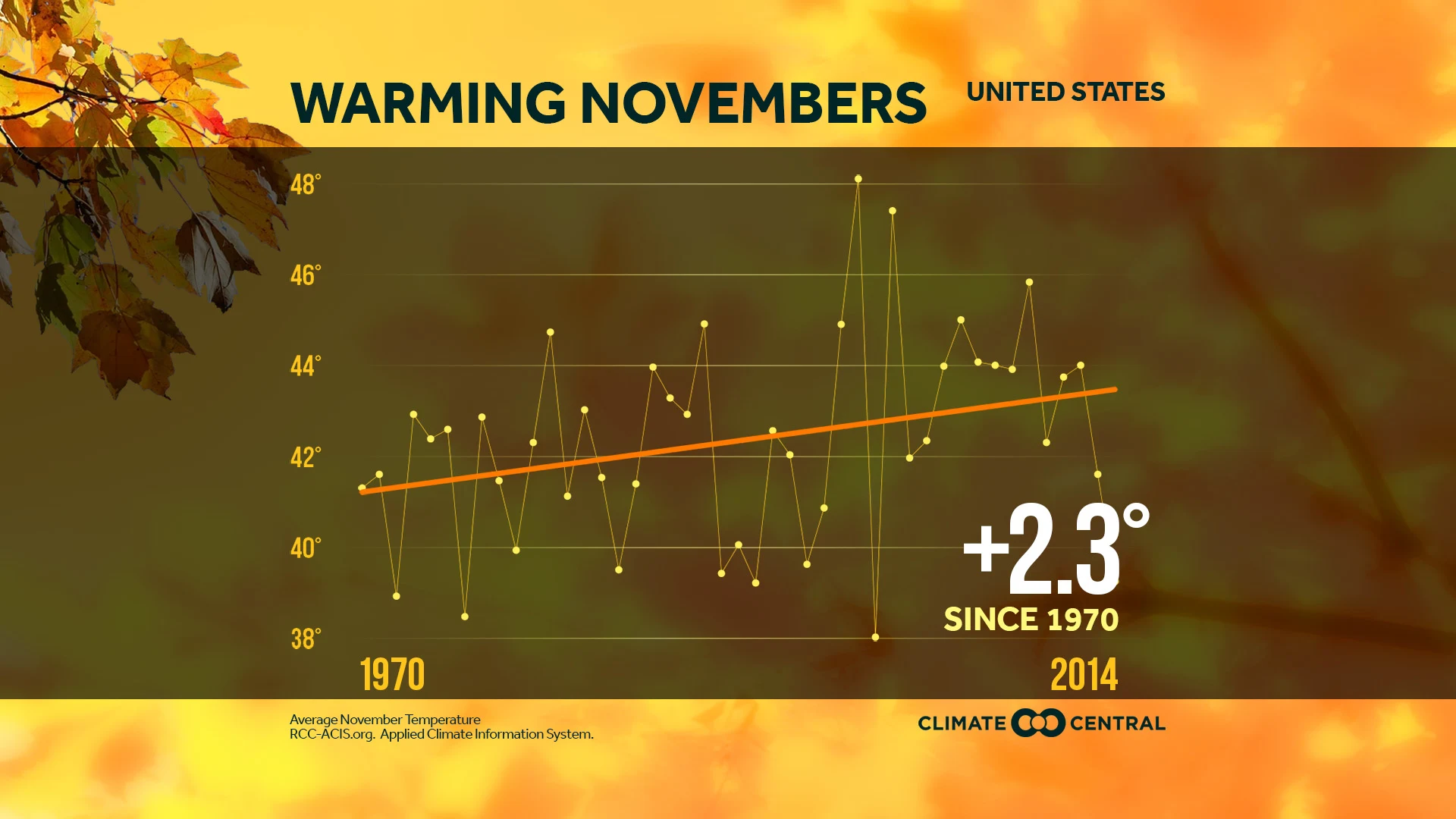
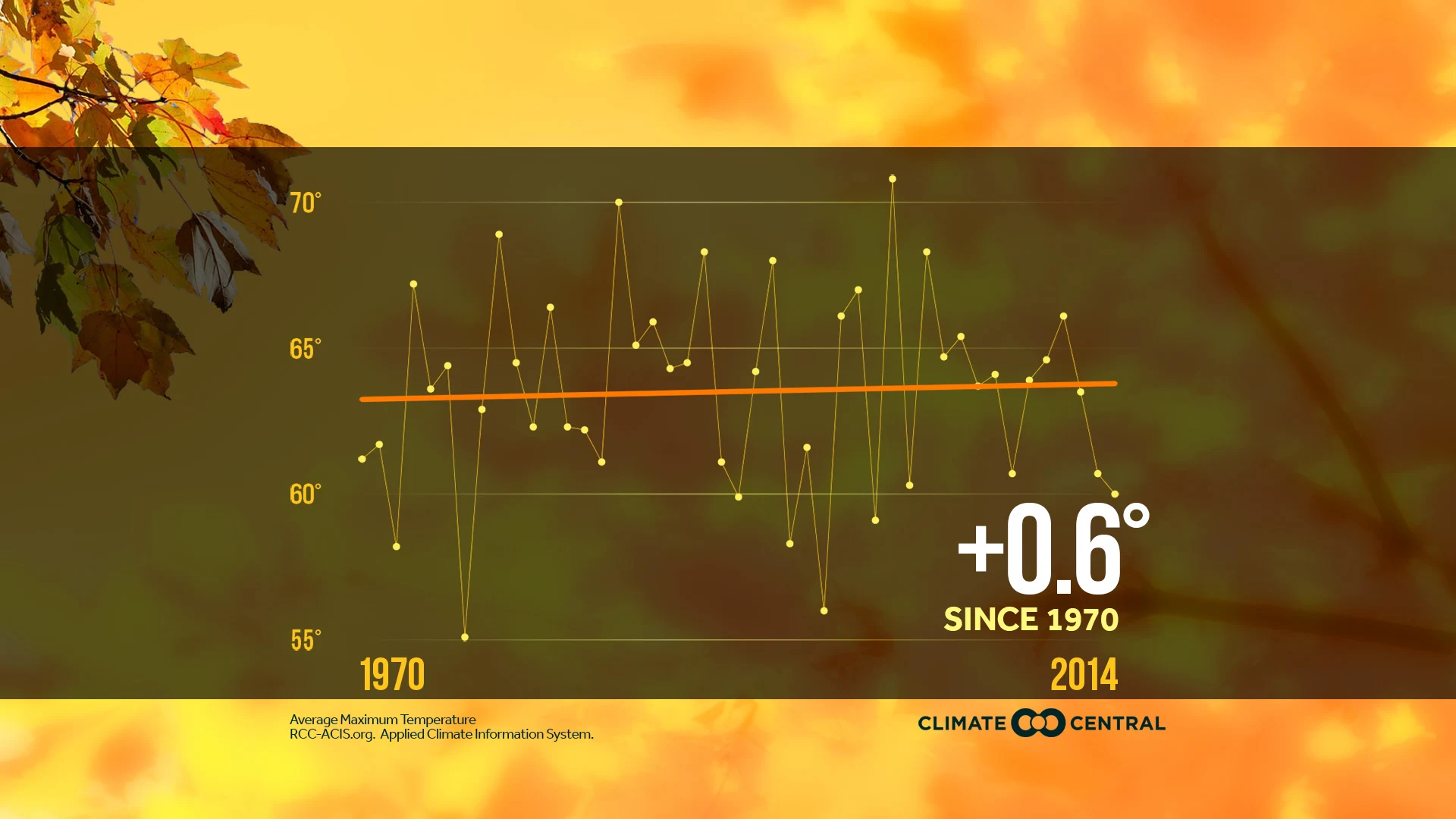
November marks the last month of meteorological fall, and this year it looks to bring an extension of the warmth from the previous two fall months. According to data from Southeast Climate Perspectives, Dallas, Denver, Kansas City, and Los Angeles all had their warmest September-October period on record.
The warm start to November in the eastern half of the country this year is flipped from last year at this time, when snow had already fallen in the southern Appalachians. But in spite of the recent chilly years in the Eastern U.S., the longer term trend is for warmer Novembers across the country. With greenhouse gases increasing from the burning of fossil fuels, these warmer November spells will likely become more common through the rest of the century.
The nationwide average November temperature has risen 0.51°F per decade since 1970, on average, giving a total warming of 2.3°F during that time. Plus, Novembers are warming slightly more than falls as a whole at 0.43°F per decade, on average, for a total of 1.9°F.
When you zoom in to the local level, November high temperature trends in individual cities show a bit more variation with some locations warming more quickly than others. Colorado Springs, Oklahoma City, and Tucson have each seen their November high temperature average climb more than 1°F per decade since 1970. Meanwhile, there are even a few places — like Tampa and Orlando — where there’s been a slight drop in the average high November temperature.
Although meteorological winter is still 4 weeks away, the general weather pattern is starting to show signs of what we would expect in an El Niño winter, with milder air regularly flooding the eastern U.S. and more frequent storminess on the West Coast. But it’s worth remembering that El Niño is not the only cause of warmer conditions. Because of overall global warming, years without an El Niño are now consistently warmer than those with an El Niño from 30 years ago.

